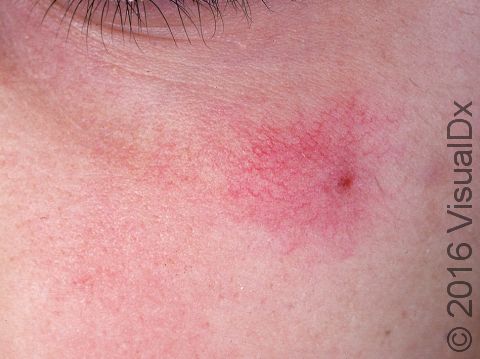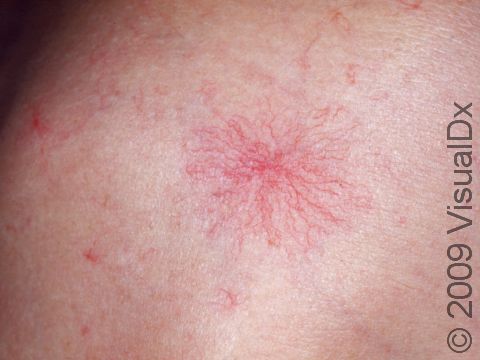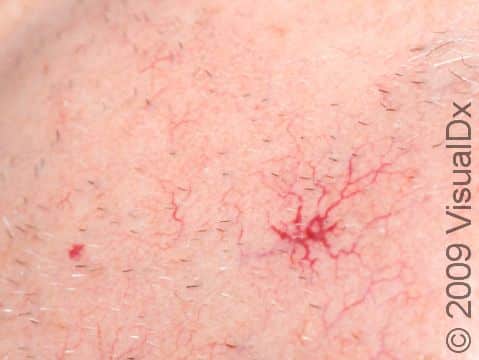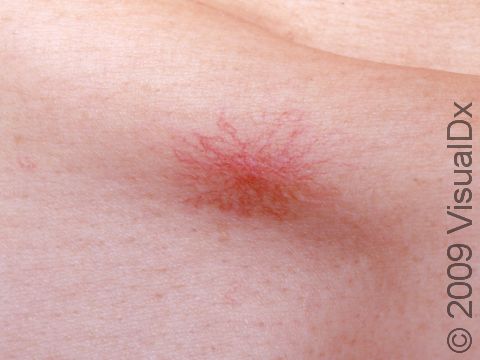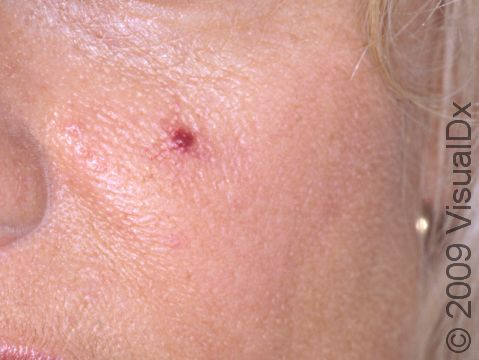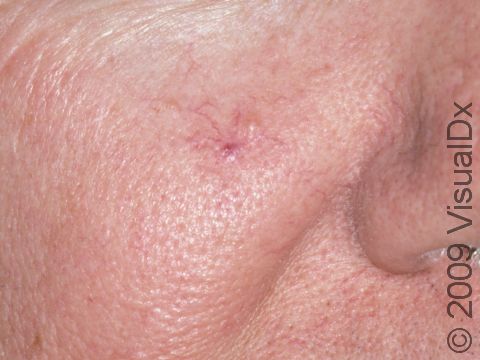Spider Angioma
A spider angioma is a common skin condition that appears as a red papule (a small, solid bump) with small red vessels radiating from it on the surface of the skin. The pattern is thought to resemble the body and legs of a spider. Applying pressure on the central portion of a spider angioma may cause the entire lesion to disappear, but then it will rapidly refill with blood once the pressure is released.
Who's At Risk?
Spider angiomas are common in both children and adults. They appear more frequently during pregnancy, in people on birth control pills, and in people with liver disease.
Signs & Symptoms
Spider angiomas are most often seen on the face or trunk, and they may also be seen on the hands, forearms, and ears. There may be one spider angioma or several. Each spider angioma is a small (1-10 mm) area of redness that disappears with direct pressure but rapidly returns when the pressure is released. There is often a central red dot and small red lines radiating out from the center. The redness is often easier to see in lighter skin colors.
People who are pregnant or on birth control pills may see improvement after they are no longer affected by hormones.
Self-Care Guidelines
No self-care measures are needed.
Treatments
- If the lesion is cosmetically bothersome, it can usually be removed with burning (electrodesiccation) or laser treatments.
- If there is concern for a liver problem, blood tests will likely be done.
Visit Urgency
Seek medical care if:
- The area bleeds repeatedly or begins to grow in size or change color.
- You suddenly develop many lesions.
- You have signs of or are at risk for liver disease (such as yellow skin color, a swollen belly, or a history of heavy alcohol use).
Trusted Links
References
Bolognia J, Schaffer JV, Cerroni L. Dermatology. 4th ed. Philadelphia, PA: Elsevier; 2018.
James WD, Elston D, Treat JR, Rosenbach MA. Andrew’s Diseases of the Skin. 13th ed. Philadelphia, PA: Elsevier; 2019.
Kang S, Amagai M, Bruckner AL, et al. Fitzpatrick’s Dermatology. 9th ed. New York, NY: McGraw-Hill Education; 2019.
Last modified on June 14th, 2024 at 1:20 pm

Not sure what to look for?
Try our new Rash and Skin Condition Finder
